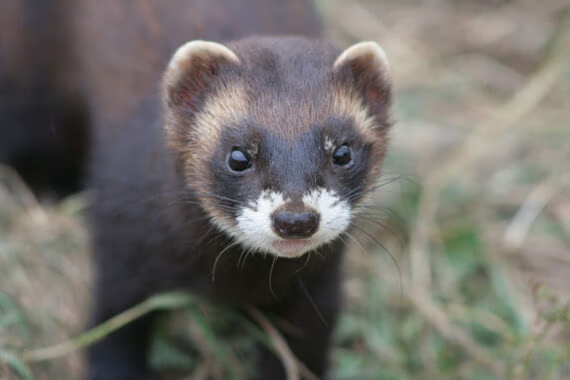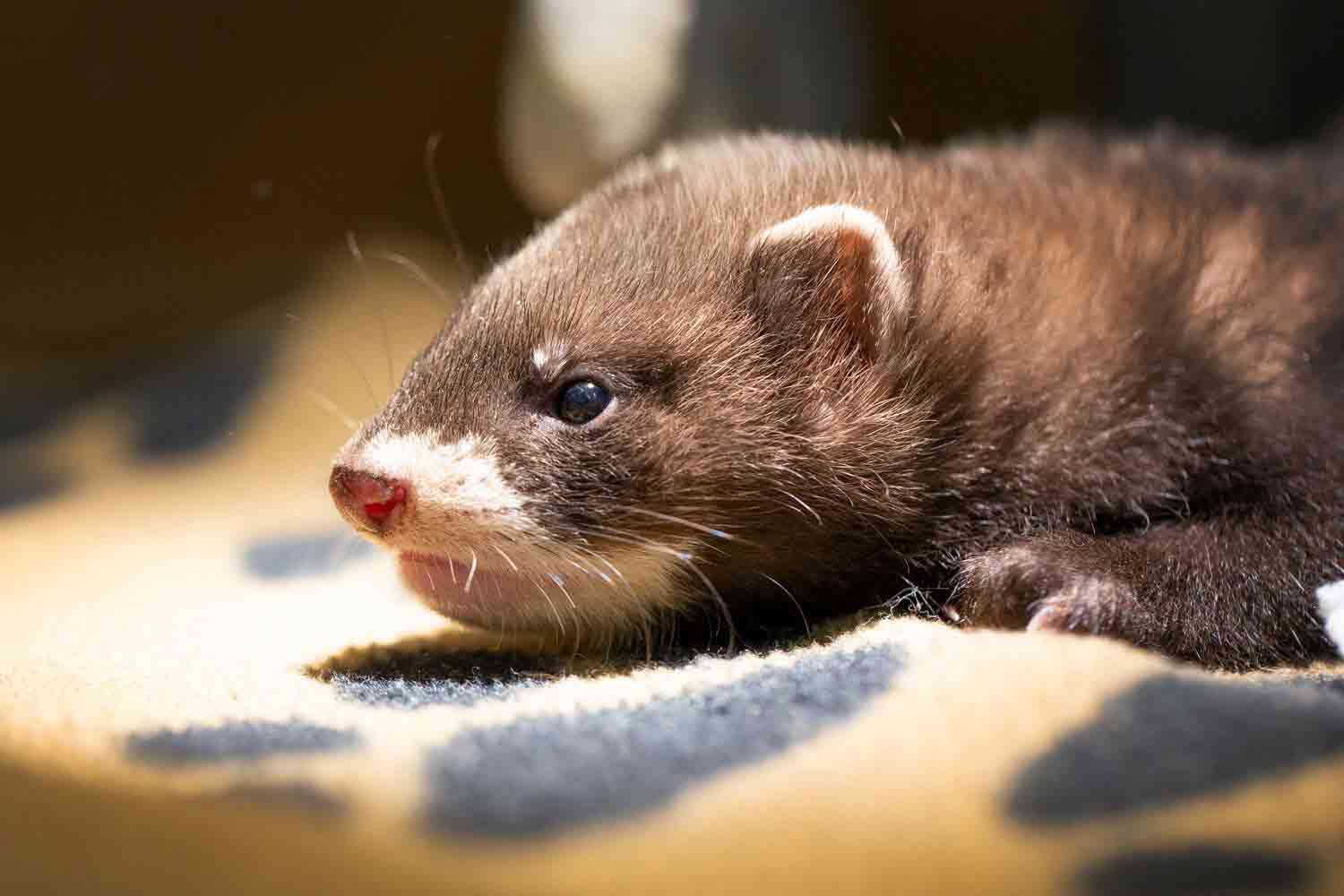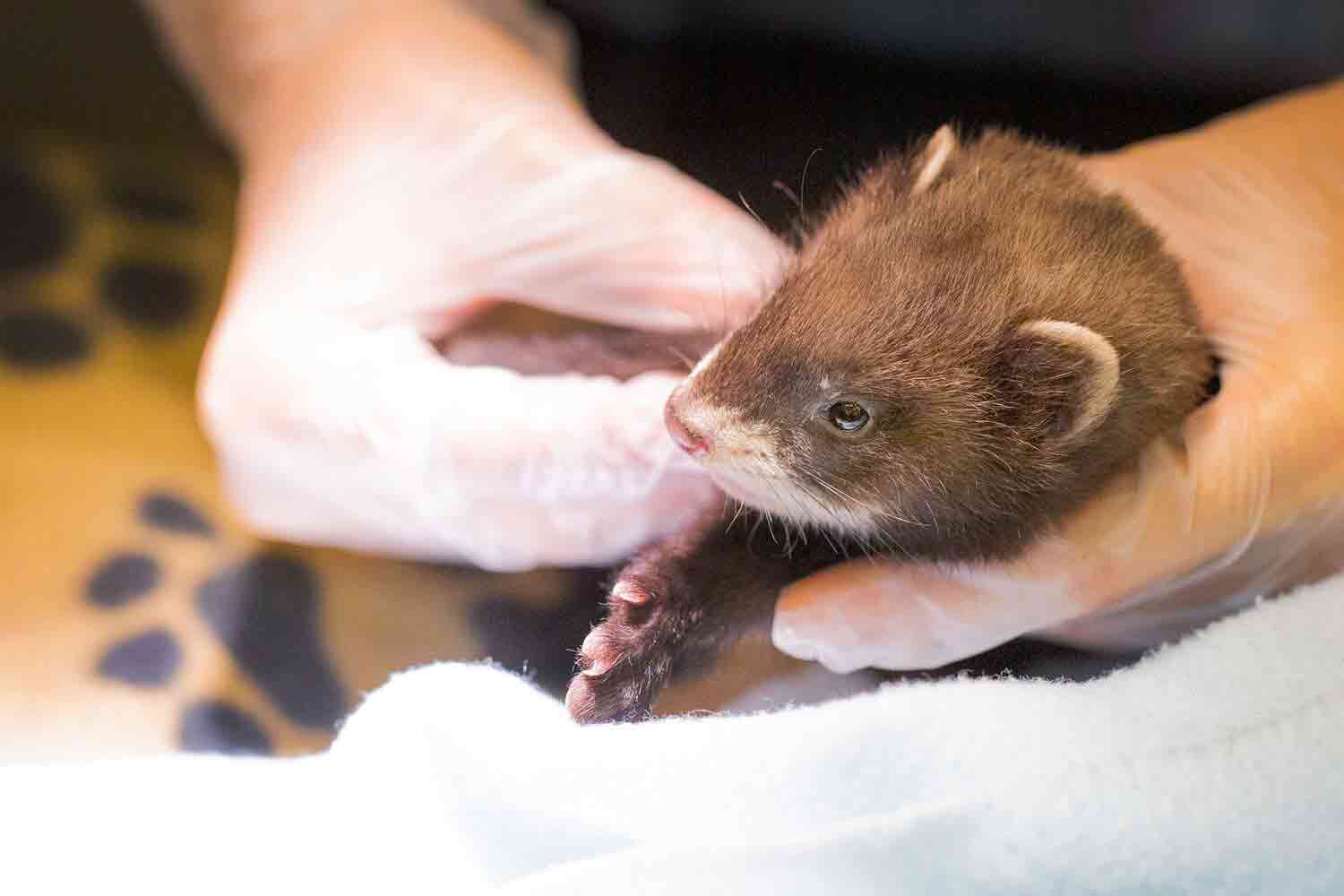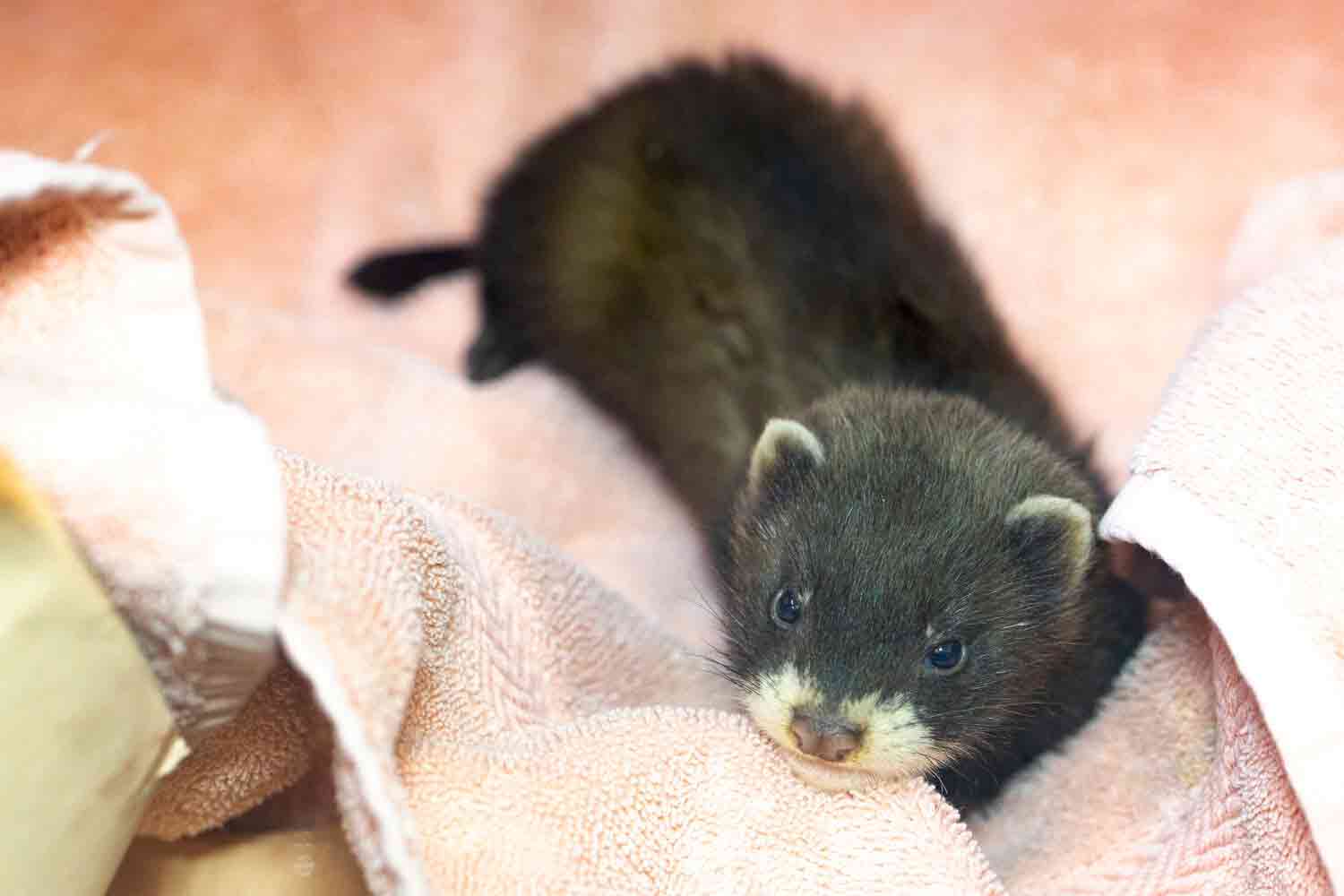Polecat
Mustela putorius
Life History
Length: 35-45 cm
Tail: 12-19 cm
Weight: 500-1,500 g
Diet: Carnivorous, preying on rabbits, rodents, frogs, and birds.
Average Lifespan: 5 to 6 years in the wild
When to See Them: Primarily nocturnal, active year-round but mostly seen at dusk or night.
UK Population : Est 46,000
UK Conservation Status: Green, though still recovering from historic declines.

About
The European Polecat (Mustela putorius), a member of the mustelid family, is distinctively dark with a pale face mask and a short, bushy tail. They’re slightly larger than ferrets, which are domesticated relatives. Polecats prefer a range of habitats, from woodlands and wetlands to farmlands, often near water sources. Their stocky build and dark fur help them blend into shaded areas, and they’re known for their strong, musky odor used to mark territory.
Behaviour
Polecats are solitary and territorial, often covering territories that overlap only minimally with others. They mark their ranges with strong-smelling secretions from scent glands, which communicate presence and deter intruders. Polecats are skilled hunters, using both dens and water sources for cover as they stalk prey. They often make dens in burrows, hollow trees, or even dense undergrowth, sometimes taking over abandoned rabbit warrens.
Breeding season occurs from March to May. After a 6-week gestation, females give birth to 5-10 kits in summer. Kits are born blind and develop quickly, venturing out with their mother at 8-10 weeks and learning to hunt by three months old. Most polecats leave their mother by autumn to establish their own territories.


Their Threats
Historical Persecution: Polecats were once widely trapped and persecuted as pests, leading to significant declines, though they’ve since recovered in many areas.
Habitat Loss: Urban development and agricultural expansion have led to the loss of natural habitats and cover, especially near water sources.
Road Mortality: Polecats are often victims of road traffic, especially in rural areas where their habitat overlaps with roadways.
Declining Prey: Reduction in prey populations, such as rabbits and rodents, can directly impact polecat survival.
How you can help
- Creating Wildlife-Friendly Gardens: Encourage dense vegetation or log piles to provide habitat for small mammals, their main prey.
- Supporting Hedgerows: Maintaining or restoring hedgerows helps create corridors for polecats to travel and hunt safely.
- Avoiding Traps: If you live in a rural area, avoid using traps or poisons that could harm polecats and other native wildlife.
- Reporting Sightings: Recording sightings to local conservation groups helps monitor and protect polecat populations.

Frequently Asked Questions
What should I do if I find an injured or orphaned polecat?
- Be aware they may bite!
How can I tell If I've seen a polecat or another mustelid like a mink or stoat?
Polecats are larger than stoats and have a distinctive dark brown coat with a pale face mask. Minks are similar in size but are usually darker without the face markings. Stoats have a slender build with a black-tipped tail, while polecats have a stockier appearance and bushy tail.
Do polecats make good pets?
No, polecats are not suited to being pets. They’re wild animals with specialized needs and are solitary, territorial, and often shy around humans. Ferrets, their domesticated cousins, are a better option for people interested in a similar, more manageable pet.